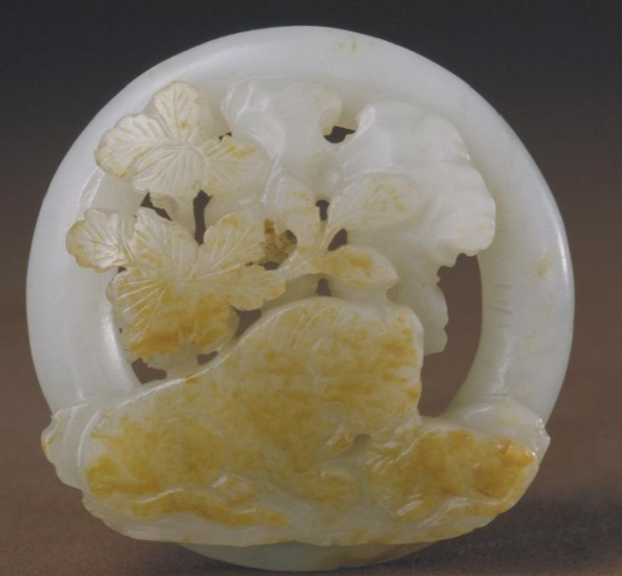
Yuan Dynasty white jade skeleton carved double tiger ring pendant
White jade with skin color, carved tigress, next to the mountain stone, tulip (phonetic) tree, under the ring, can be tied to the ribbon.
Drill hole enlargement renderings
During the Liao and Jin dynasties, the Khitan and Jurchen nobles had the tradition of holding bowls at four o'clock, and "Spring Water" and "Qiushan" were the most characteristic activities. The so-called "spring water" means that at the beginning of the spring ice and snow (yinpan, meaning melting), go to the river to dig ice to fish, and hunt swans in the sea holly; the so-called "autumn mountain", that is, in the late autumn, enter the mountains to hunt deer and catch tigers. Tomb murals and jade carvings of the Liao and Jin dynasties were created with chunshui and qiushan as the themes.
Renderings of the line and leather color enlargement
In terms of jade carving works, Chunshui jade often features sea holly and swans, while Qiushan jade usually shows animals in the oak forest and mountains and stones, and cleverly uses the color of jade skin to render autumn scenery. Although this double tiger ring pendant is a work of the Yuan Dynasty, its theme and beautiful color craftsmanship are in line with similar jade carving works in the Liao and Jin dynasties.
Yuan Dynasty Jade Lying Horse
The jade horse is lying on its side, looking straight up, with sharp ears, fusiform eyes, two yin lines on the nose, four legs under the abdomen, the tail close to the hind feet, and because of the side lying, it exposes a slightly swollen abdomen.
The focus of this jade horse performance is mainly in the rest posture of lying on the side of the ground, and the overall shape is round and cute because it can grasp the three-dimensional performance of the muscle lines.
[Analogue]: Similar shape of the Jade Horse of the Yuan Dynasty, see: Chinese XiaoSheng Jade Carving, Hong Kong: Hong Kong Museum of Art, 1996, pp. 154-155. In 2008, it was sold for 100,000 yuan. (More consultation to pay attention to Douyin Kuaishou users: MuYang "Say Collection")